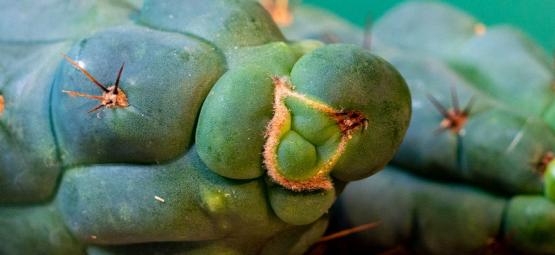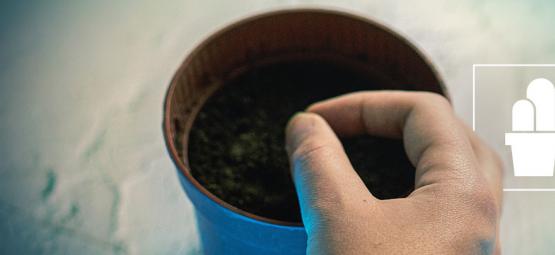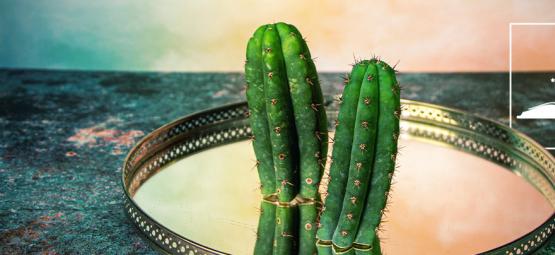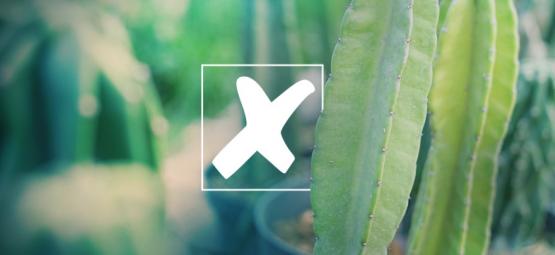The Ultimate Mescaline Cactus Guide
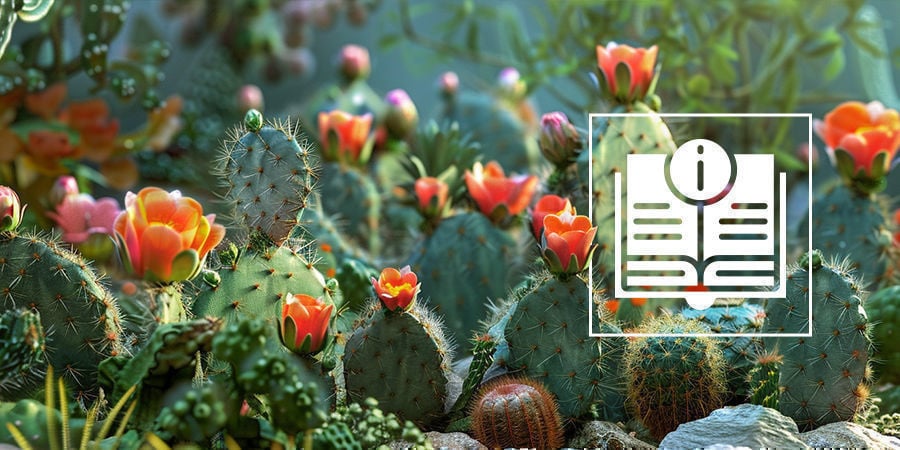
Mescaline is a time-honoured but often misunderstood drug. Here we aim to demystify it somewhat, and give a general overview of everything you need to know about mescaline cacti!
Mescaline is a psychoactive alkaloid found in a range of cactus species that grow in Central and South America. Despite being used for millennia by indigenous groups, mescaline remains relatively unexplored by other cultures—even though it is one of the longest-used drugs on the planet.
In this article, we aim to provide a comprehensive overview of mescaline, its history, the species of cacti that produce it, how to use it, and even how to grow it! Find out all you need to know about mescaline here.
What is a mescaline cactus?
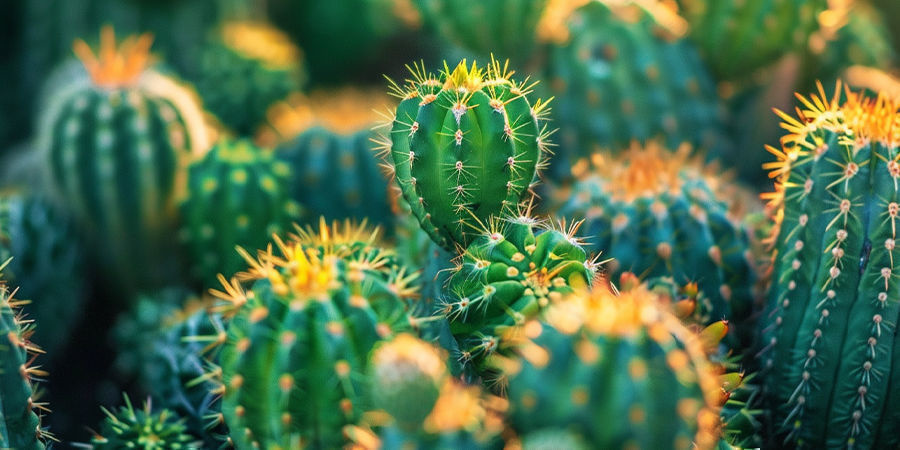
Mescaline cacti are a group of plants known for their psychoactive properties, mainly due to the presence of mescaline (hence the name), a naturally occurring psychedelic alkaloid. This compound is a serotonergic hallucinogen, similar to but distinct from psilocybin (found in magic mushrooms).
Some common mescaline-containing species are peyote, San Pedro, and Peruvian torch. These cacti, native to deserts and mountains of Central and South America, have been used for millennia in traditional spiritual practices by a variety of indigenous groups. Often referred to by their botanical names, such as Lophophora williamsii (peyote) and Echinopsis pachanoi (San Pedro), these plants hold a significant place in both historical and contemporary practices.
Time-consuming to grow and expensive to synthesise, mescaline is not a widely used drug outside of the cultures where it has long been used. However, in the wild these cacti are not uncommon and can reach very large sizes, depending on the species. Some, such as peyote, are very potent but take many years to grow and remain quite small. Others, such as San Pedro, grow faster and larger but contain less mescaline gram for gram.
A brief history of mescaline use
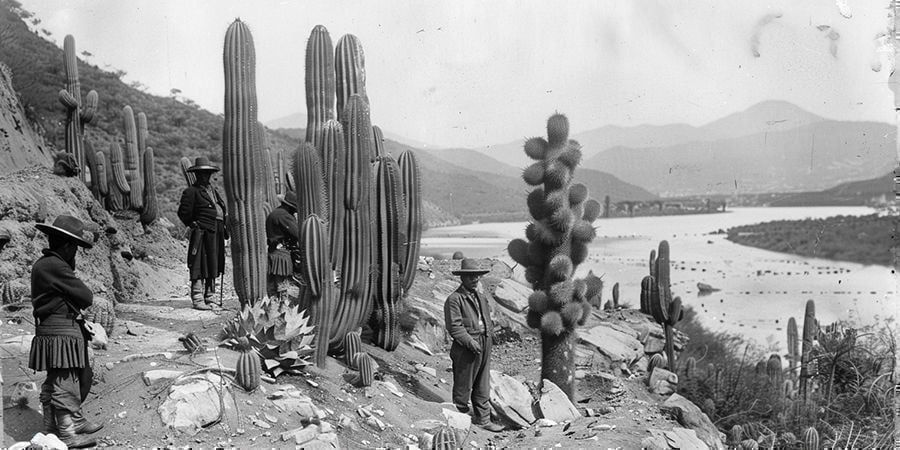
Mescaline use spans back a very long time indeed—around 6,000 years—and may well have been used prior to any records. Along with Psilocybe mushrooms, it may be one of the drugs with the longest history of use. Mescaline use can be traced back primarily to the indigenous cultures of the Americas (North, Central, and South). In fact, beyond these cultures its use was almost unheard of until recently, and even now it is not a common drug for most of the world’s population.
Mescaline was eventually discovered by Europeans in the early sixteenth century when the Spanish encountered the cultures who used it, such as the Aztecs. The Spanish then went on to attempt to, in some cases successfully, destroy these cultures, and missionaries from a variety of oppressive European empires attempted to suppress the use of mescaline cacti. Fortunately, they failed, and those surviving groups of people still use these cacti today.
It wasn’t until the 1960s that mescaline entered European and US popular culture, when Aldous Huxley began experimenting with psychedelics and wrote his famous Doors of Perception, which describes his first experience with mescaline. The Teaching of Don Juan by anthropologist Carlos Castaneda also brought this drug into the spotlight for many; it recounted his initiation into peyote usage following Yaqui cultural traditions. This is perhaps the first, or at least the first widely advertised, example of someone taking the teachings of an indigenous person (regarding mescaline) and making them widely available.
Types of mescaline cactus
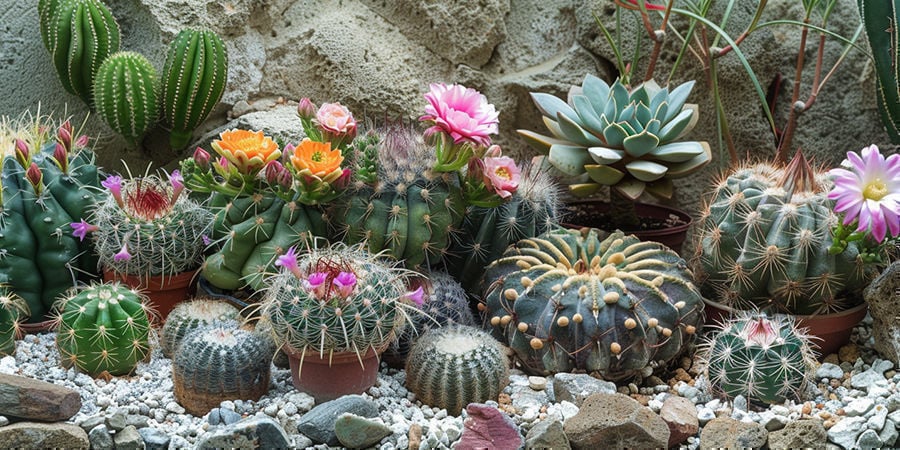
There are many species of cactus that contain mescaline, and, though similar, each has unique characteristics, both in terms of growth and effects. Here are some of the most notable species.
1. Peyote (Lophophora williamsii)
Peyote is a small, spineless cactus known for its psychoactive properties. It grows in the Southwestern United States and Mexico where it has been used for centuries in Native American religious ceremonies. Peyote contains the highest levels of mescaline per gram, making it the most potent mescaline cactus on the planet. So why doesn’t everyone just grow peyote? Because it takes about a decade to grow a single dose!
2. San Pedro (Echinopsis pachanoi)
San Pedro is a tall, columnar cactus native to the Andes Mountains. It is large and fast growing while still containing a high concentration of the mescaline alkaloid. For this reason, it is more common among users of psychedelics than peyote. San Pedro has been used for over 3,000 years in traditional holistic and religious rituals in Peru, making it a historically and culturally important psychedelic plant.
3. Peruvian torch (Echinopsis peruviana)
Similar to San Pedro, Peruvian torch is a tall cactus native to Peru. It contains high concentrations of mescaline and has a long history of use in Andean shamanic practices. Along with San Pedro, Peruvian torch is one of the most commonly consumed and sold mescaline cacti worldwide.
4. Echinopsis Zamnesiana
A hybrid strain developed for its potent mescaline content and unique characteristics, Echinopsis Zamnesiana is our very own hybrid, which is similar to San Pedro and Peruvian torch. Growing tall and fast, it’s a potent strain that develops some unusual forms.
5. Bolivian Torch (Echinopsis lageniformis)
Bolivian torch is another columnar cactus known for its significant mescaline content. Native to Bolivia, it is similar in appearance to Peruvian torch and is prized for its psychoactive properties. This is another popular variety, and while it’s slightly less potent than some others, it is still powerful and well worth using!
Which cactus contains the most mescaline?
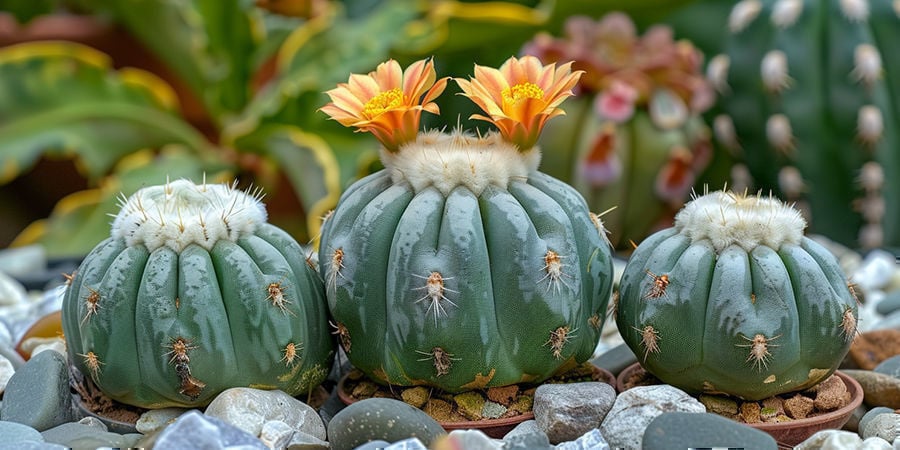
Among the various mescaline cacti, peyote, San Pedro, and Peruvian torch are renowned for their high mescaline concentrations. As mentioned, peyote is often cited as having the highest content, followed closely by San Pedro and Peruvian torch.
Though genetics plays the most important role in determining potency, growing conditions can also impact mescaline content. Some speculate that tough growing conditions and damage to the plant body (simulating predation) can increase the amount of mescaline these plants produce, as it’s thought that mescaline acts as a defence mechanism in a natural environment.
The mescaline experience
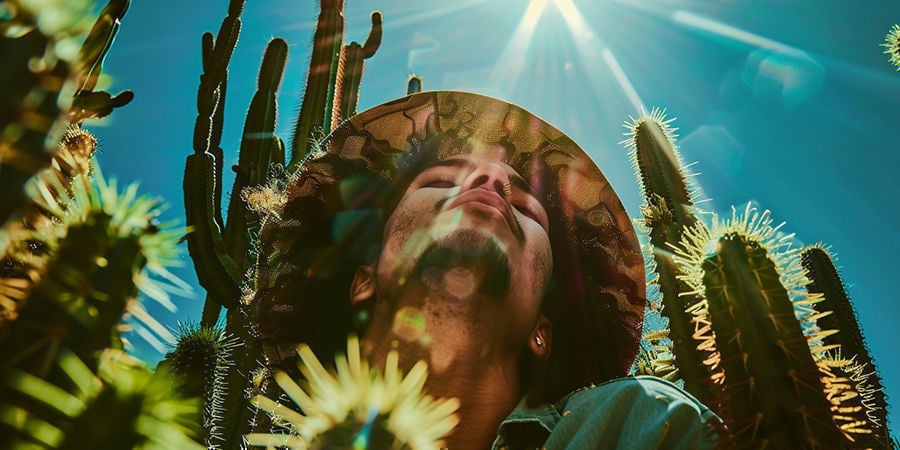
Mescaline produces a range of effects on both the mind and body. Dose, strain, set and setting, and a variety of other factors will all influence the experience. It’s therefore important to go into any drug experience with a sense of openness, acknowledging that you can never really know what you will experience.
However, here's an overview of some of the most common effects.
Effects of mescaline
- Visual and auditory hallucinations: Enhanced perception of colours, patterns, and sounds. It is reported that these patterns are often quite geometric and structured.
- Euphoria: Intense feelings of happiness and well-being.
- Altered time perception: Time may seem to slow down or speed up.
- Introspection: Deep personal insights and philosophical thoughts.
- Physical sensations: Tingling, increased heart rate, and a general feeling of physical comfort.
Does mescaline have any therapeutic value?
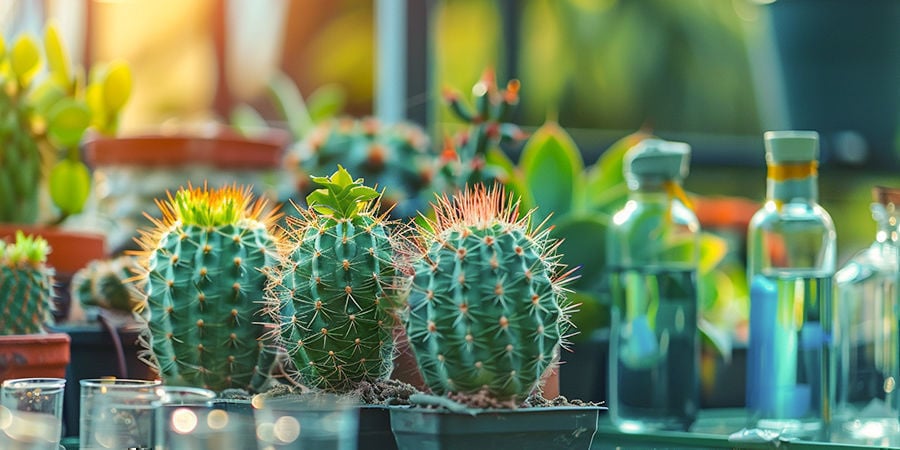
By and large, mescaline has been studied much less compared to psychedelics like psilocybin. While research is ongoing, some studies suggest that mescaline may have potential therapeutic benefits, particularly for mental health conditions such as depression and PTSD. However, more rigorous scientific research is needed to fully understand its therapeutic potential.
How much mescaline do you need for a psychedelic experience?
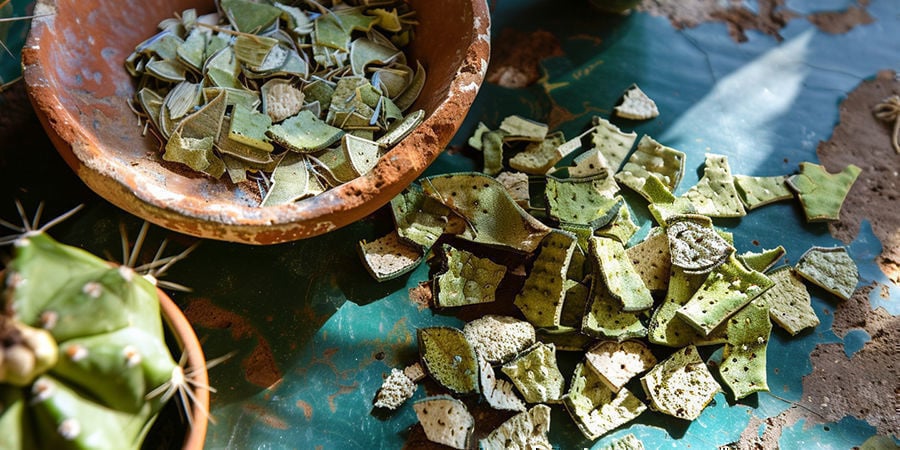
The amount of mescaline required for a psychedelic experience can vary widely depending on the individual's body chemistry, tolerance, and the specific cactus. Generally, a moderate dose can induce significant psychoactive effects, but it is crucial to approach mescaline use with caution and respect.
When it comes to dosing, it can be difficult to know exactly how much you're taking, as each cutting or button (section of peyote) will contain a unique amount of mescaline. Therefore, it’s important to research your chosen strain and make a judgement based on that.
How does mescaline compare to magic mushrooms (psilocybin)?
While both mescaline and psilocybin (found in magic mushrooms) are powerful psychedelics, they offer different experiences. Mescaline is known for its longer duration and more pronounced visual effects, while psilocybin tends to produce more intense emotional experiences.
In all likelihood, if you enjoy one, then you are very likely to enjoy the other. Though different, both are serotonergic psychedelics and therefore share some broad similarities in character.
How to grow a mescaline cactus
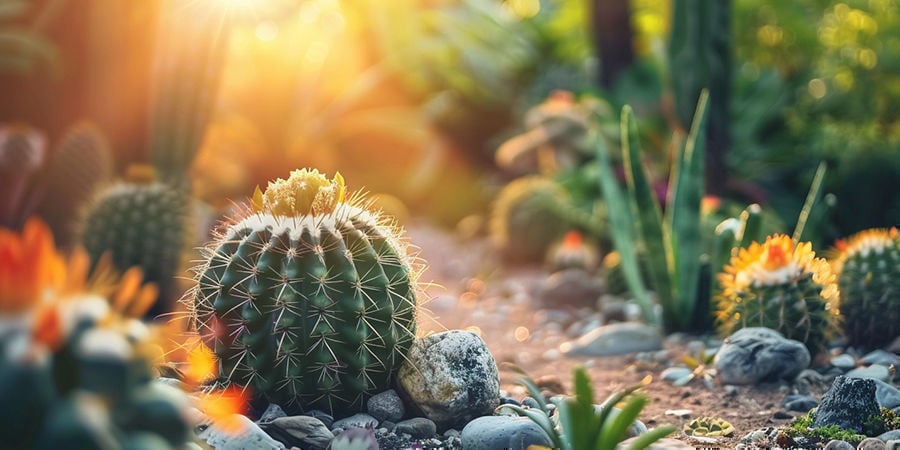
Depending on the species, growing mescaline cacti can range from pretty easy to somewhat challenging—with peyote being harder than the others to cultivate at home. Although, the biggest difficulty with this strain is waiting the 10 years necessary to harvest one or two decent trips.
Below, find general instructions for cultivating mescaline cacti at home.
Growing mescaline cacti from seeds
- Germination: Use a well-draining soil mix and keep the seeds moist but not wet. Plant seeds about 5mm deep and lightly cover with soil. Maintain warmth and humidity. Some sort of greenhouse environment is best for seedlings.
- Light: Provide ample sunlight, but protect young seedlings from direct, intense sun as this might damage them.
- Watering: Water sparingly, allowing the soil to dry out between waterings. You can water by placing the pots in a dish of tepid water and allow it to wick up through the soil.
For a detailed guide, visit our seed cultivation article.
Growing mescaline cacti from cuttings
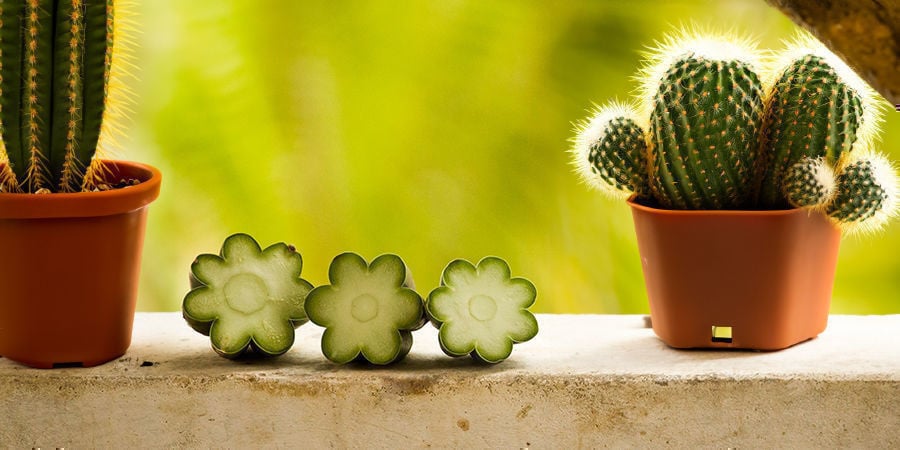
- Cutting preparation: Allow the cutting to callous over before planting, if you’ve taken the cutting yourself.
- Planting: Use a cactus-specific soil mix and plant the cutting shallowly, but ensure that it is secure in the pot.
- Care: Water infrequently until roots develop, as the plant will not be able to uptake much water, if any. Then follow regular cactus care.
Learn more about growing from cuttings in our dedicated article.
How fast do mescaline cacti grow?
Growth rates vary among species and conditions. Generally, mescaline cacti grow slowly, with peyote being particularly slow-growing, often taking many years to reach maturity. San Pedro and Peruvian torch grow faster, potentially adding on a few centimetres per year. Therefore, if you grow from a cutting, you can hope to harvest a good dose of San Pedro or Peruvian torch after only a few years.
In any case, growing your own mescaline cacti will be a labour of love; it is not a quick way to get high!
How to care for a mescaline cactus
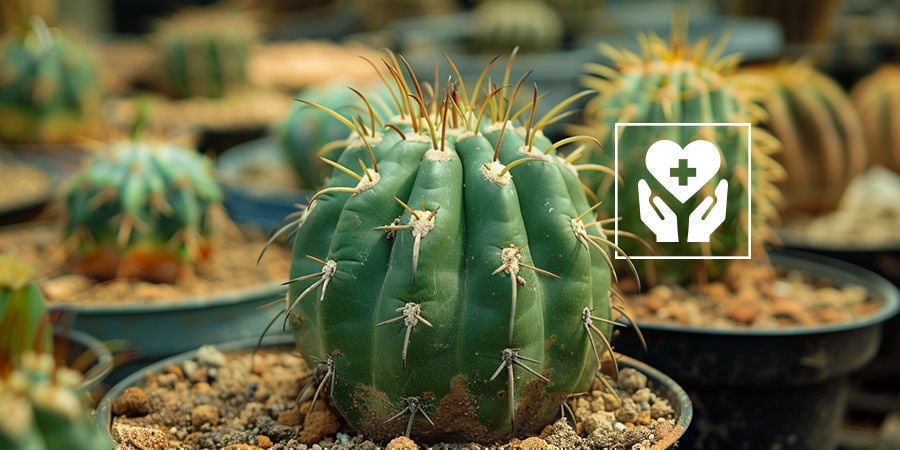
Caring for mescaline cacti involves ensuring they have the right conditions to thrive, which should imitate the arid conditions of a desert or the conditions of the low Andes. Fortunately, they’re quite adaptive plants and can make do with the following:
- Light: Bright, indirect sunlight
- Water: Infrequent watering, allowing the soil to dry out completely between waterings
- Soil: Well-draining cactus mix
- Temperature: Warm temperatures, avoiding frost
For more tips on care, visit our mescaline cactus care guide.
How to prepare a mescaline cactus
Preparation methods for mescaline cactus can vary, but here are the basics:
- Drying: The cactus is often dried and ground into a powder. This powder can then be encapsulated and taken in capsule form.
- Tea: You can also boil the dried and pulverised cactus to make a tea. This is a common method of consumption.
- Extraction: More advanced techniques can isolate mescaline for consumption, but these are challenging to perform at home.
- Eating: Peyote buttons can be eaten directly, but expect to encounter some nausea.
Are mescaline cacti legal?
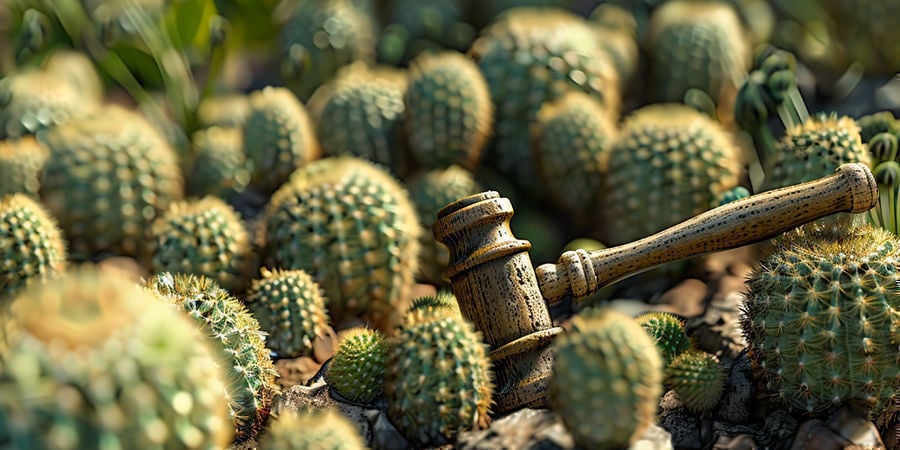
The legal status of mescaline cacti varies widely by country and region. Generally, mescaline itself is controlled under most domestic laws, but the legality of the cacti can differ. Always check local regulations before cultivating or using mescaline cacti. In Europe, the sale and transport of mescaline-containing cacti is usually legal, even where its consumption is not.
In the US, mescaline is a controlled substance with certain allowances for ceremonial use within some Native American cultures.
The rich and vibrant world of mescaline cacti
Mescaline-containing cacti come in many shapes and sizes, each offering its own growing characteristics and even slight differences in effects. This compound has long been known and loved by select groups, but for those who haven’t come across it, it retains a sort of mythological status. And indeed it should! Capable of producing deep, profound experiences, this drug well deserves its revered status.
The history of mescaline cacti is long and much of it will remain unknown. We’ve only just begun to cover the basics in this article, but we hope it gives you a little insight into this plant, and can potentially guide you if you decide to cultivate or consume mescaline cacti.
You might also like











 United States
United States

